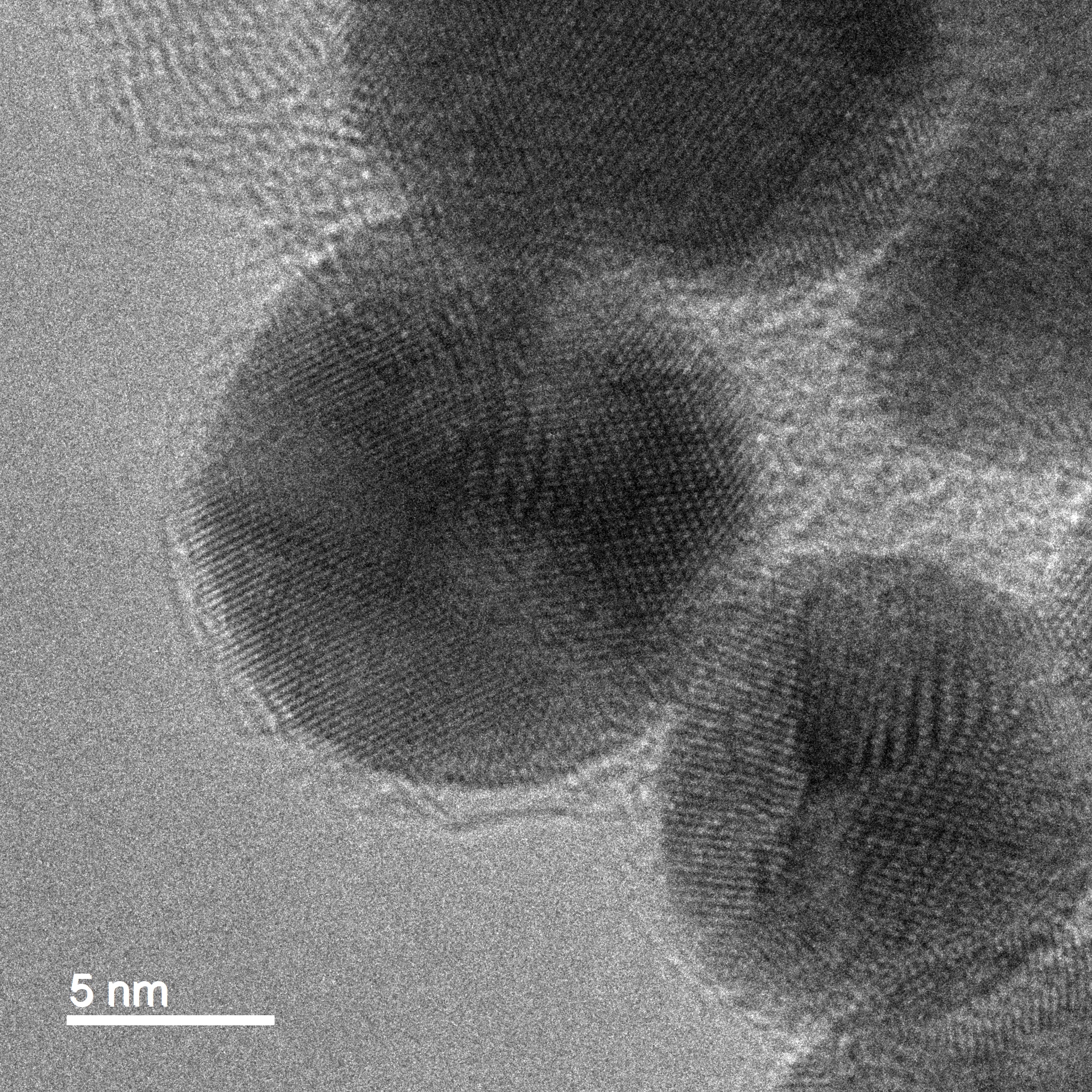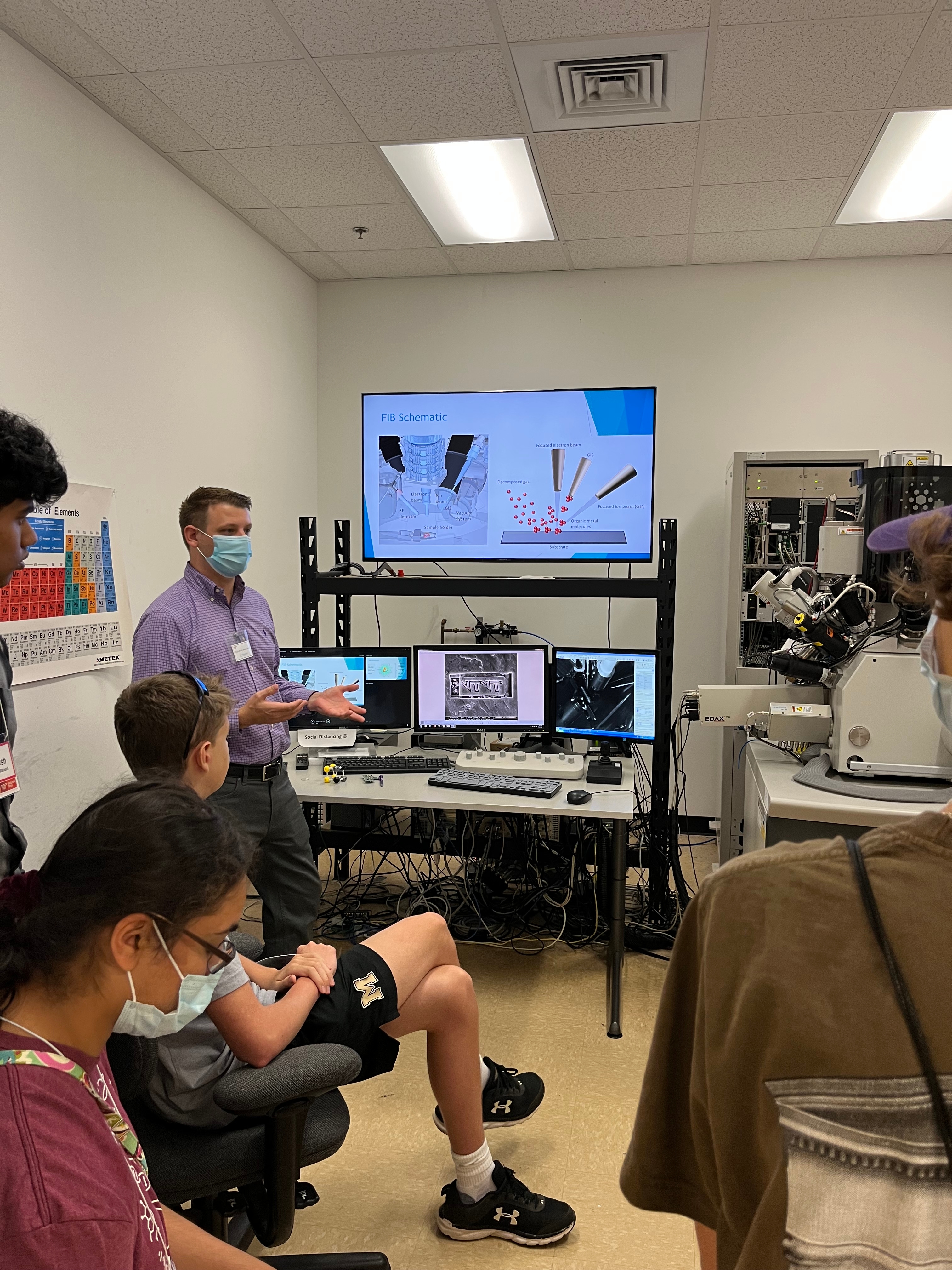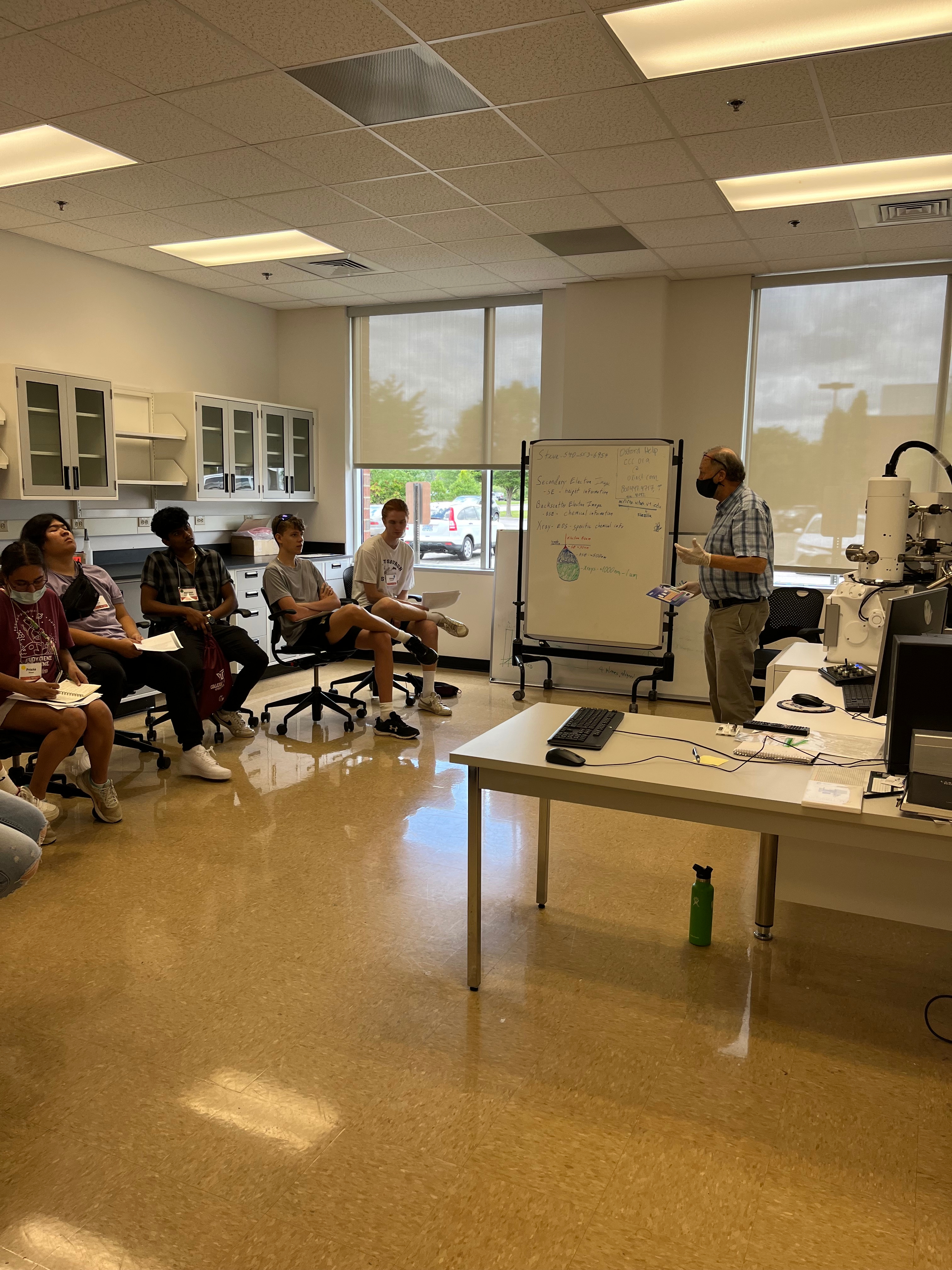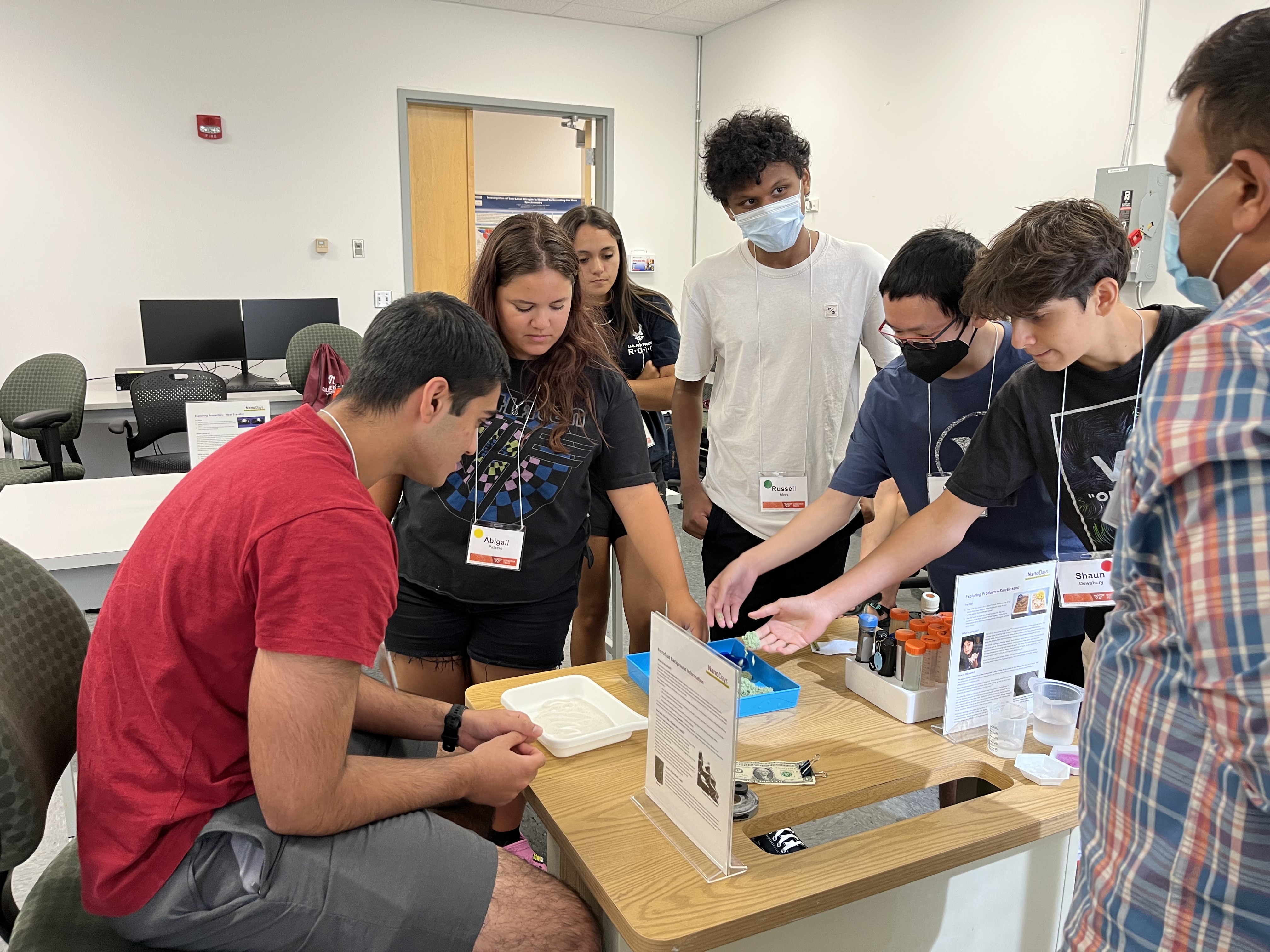High School Students Practice Nanotechnology Techniques with NanoEarth!

In July 2022, NanoEarth hosted 32 high school juniors and seniors from eight different states during Virginia Tech College of Science’s Explore Physical Sciences Camp. The goals of the camp were to expose students to various science fields, experience college life, and solve real world problems.
During their visit with NanoEarth, students first received an introduction to nanoscience, which discussed nano scale and practical applications. Students then completed rotations in the following laboratories housed within the Nanoscale Characterization and Fabrication Laboratory (NCFL): Gold Nanoparticle Synthesis and Sensory, Transmission Electron Microscope (TEM), Focused Ion Beam (FIB), Scanning Electron Microscope (SEM), and Nano Demonstration Kits.
Virginia Tech Center for Sustainable Nanotechnology Laboratory Director Weinan Lang taught students how to synthesize citrate reduced gold nanoparticles. This “bottom-up” approach for nanoparticle synthesis led them to use the nanoparticles as sensors for a disease simulant.
In a demonstration conducted by NanoEarth Instrument Specialist Sheri Singerling, students learned the basics of TEM and watched the operation of the microscope. Then, students used the microscope themselves to image gold nanoparticles down to the atomic level. They discovered this tool can image both naturally occurring minerals and man-made materials from the micro- to nano-scale.
Senior Research Associate Jonny Angle discussed the techniques of using the ion beam to either deposit platinum or remove material at the surface of a sample. Students observed the construction of a circuit board on the FIB by removing the surface polymer to expose the underlying copper circuitry. Students analyzed the rigidity of the circuit board, created by the fiberglass filling of the polymer coating.
NCFL Instrument Specialist Steve McCartney analyzed Mars soil simulant and household dryer lint using the SEM and Energy Dispersive Spectroscopy (EDS). The samples highlighted the imaging differences between the SEM’s secondary electron detector (SED), the backscatter electron detector (BSD), and the EDS. Color X-ray maps revealed the spatial distribution of the different elements found in the samples. Students learned how common tasks such as laundry can introduce micro and nano size contaminants into the environment.
Postdoctoral Associate Bipin Lade and Diversity and Outreach Coordinator Sylvianne Velasquez led students through hands-on nano demonstration kits. Students experimented with nano fabric, memory metal, nano sand, kinetic sand, heat transfer, and ferrofluid. They learned how changing a material’s structure at the nanoscale will change how it reacts at the macro scale. Students investigated the Lotus effect in water resistant fabric fibers, thermal conductivity in graphene and aluminum, and magnetic ink behavior under a magnetic field. They explored the effects of low and high temperature on memory metal, and the physical properties of kinetic and hydrophobic sand.
Assistant Dean for Outreach and Student Engagement in Virginia Tech’s College of Science, Vicki Corbin stated “the activities at the NCFL started camp off on the right track. The kids got to see how amazing technology can make the invisible visible!” When students were asked what they loved about the NCFL activities, they declared “seeing atoms”, “doing the gold experiment”, and “the applied nanotech demonstrations”. Students left with new nanotechnology knowledge mastered from interactive experiments, and demonstrations. Hopefully, they will take this spark back to their respective states and into their scientific career journeys.













